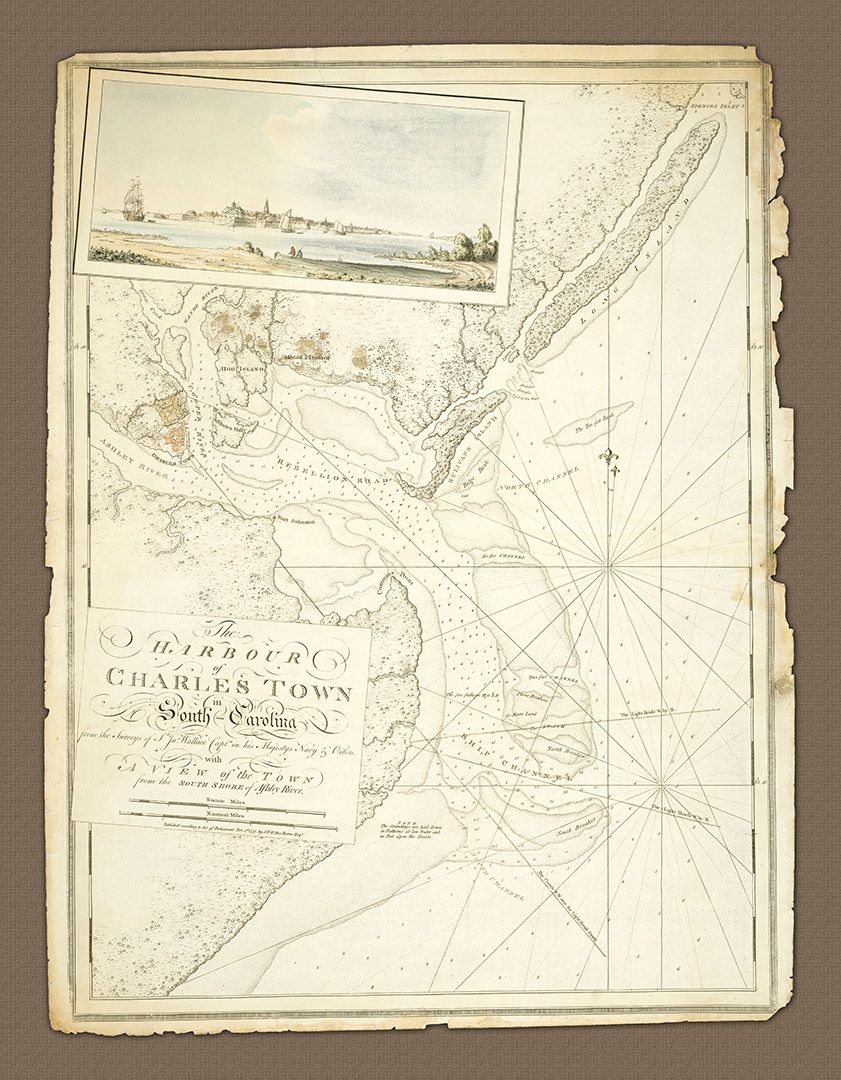Worn around the edges through use, this is a beautiful chart of an important region and town and still retains its full range of colors and detail.
By 1779 the British had adopted a 'Southern Strategy' which sought to control the Southern States (North Carolina, South Carolina and Georgia) by isolating them from the more northerly regions of New England and New York.
The strategy assumed that, by controlling the important ports of Charlestown[1] (Heritage Charts A308), Savannah (Heritage Charts A301 and A304), Port Royal (Heritage Charts A301, A304 and A306), St Augustin (Heritage Charts A414) and others, the Colonial army would be starved of funds and supplies coming-in from overseas. These Southern States were also rich in tobacco, spices, rice and in slaves, a large number of whom the British hoped to induce into the British Army in return for their freedom. Underpinning the British strategy was the assumption that the large base of Loyalist supporters from around these states would rally to the King if they were given some military support. Charlestown [1] was to be the center of operations for the execution of the 'Southern Strategy' and the town was finally taken by the British in May 1780 after a six-week siege (see Heritage Charts A422).
The survey for the chart was likely made in late 1776 after Captain Sir James Wallace [2] and his ship H.M.S. Rose had served in the invasion of New York in 1776 and before Wallace left 'The Rose' [3] in January 1777 to fulfil another post.
J.F.W. Des Barres, in typical style, includes a good deal of topographic land relief at the time of publication to enhance the story., Including an attractive view of Charleston from accross the Ashley river. For more on the story behind this beautiful view please see the Heritage Charts Logbook article 'An Artists View of Charleston': https://www.heritagecharts.com/post/an-artist-s-view-of-charleston
[1] Charles Town(e) or Charlestown was (re)named after King Charles II of England in 1670, and the city finally adopted its present name, Charleston, in 1783 after the War of Independence had ended.
[2]. Although Wallace, as a newly-Knighted hero of the War of Independence, is afforded credit for the survey work presented it is likely he was only one of many surveyors working in the region and his contribution would likely have been to report or sketch the hydrographic content and detail.
[3] The Rose finally met her end in 1779 in Savannah, Georgia, where she was scuppered by the British to blockade the channel.
Depicted here is the coastline of South Carolina from Spences Inlet (now Dewees) north of Charleston Harbour, down to what is now Folly Island and beach to the south. The view of the city of Charleston is from the north shore of James Island overlooking the Ashley River. Worn around the edges through use, this is a beautiful chart of an important region and town and still retains its full range of colors and detail.



